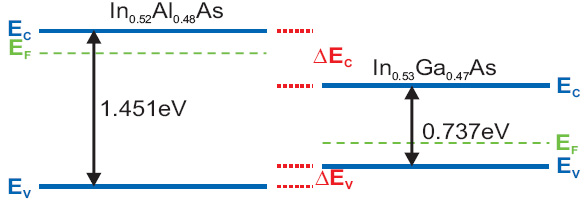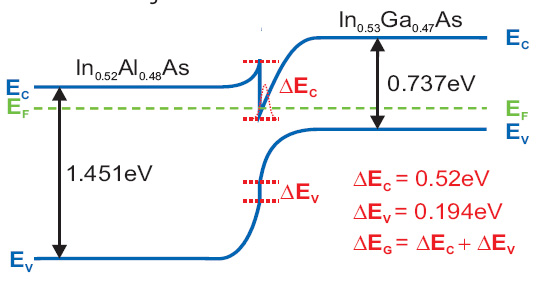High Electron Mobility Transistors (HEMTs)
The High Electron Mobility Transistor (HEMT) is a heterostructure field-effect transistor (FET). Its principle is based on a heterojunction which consists of at least two different semiconducting materials brought into intimate contact. Because of the different band gaps and their relative alignment to each other, band discontinuities occur at the interface between the two semiconducting materials.
These discontinuities are referred to as the conduction and valence band offsets ΔEc and ΔEv. By choosing proper materials and compositions thereof, the conduction band offset can form a triangular shaped potential well confining electrons in the horizontal direction. Within the well the electrons can only move in a two-dimensional plane parallel to the heterointerface and are therefore referred to as a two-dimentional electron gas (2DEG).
To determine the exact shape of the conduction and valence bands, the Schrödinger and Poisson equations must be solved self-consistently.

